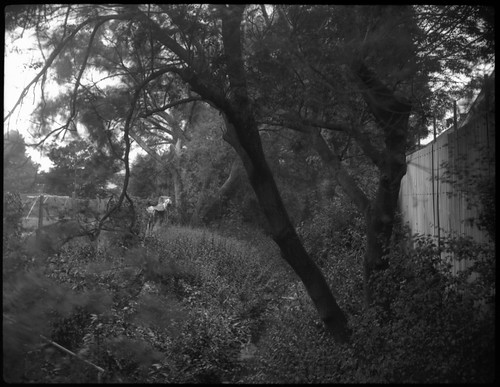 |
| Dagenham Brook, Baby Ikonta, Kodak High Resolution Aerial Duplicating Film |
On last Saturday's
127 Day, I shot two rolls of
Ilford Selochrome and
Kodak High Resolution Aerial Duplicating Film apiece with my Baby Ikonta. The Selochrome films had a develop before date of January 1970, but I've had fairly good results with out of date Ilford
127 format films before, notably FP4 on
last December's 127 Day. These Selochrome films were originally rated 160 ISO, but I shot the rolls at 40 EI to compensate for the loss of sensitivity with age. Selochrome was a brand name that Ilford used for a number of emulsions - the Selochrome roll film I used was panchromatic, whereas I have used older versions of Selochrome which were orthochromatic. To develop the Selochrome films, I extrapolated a time from
the leaflet inside the box, which has data for ID-11 and Microphen. I used Ilfotec LC29; to determine a developing time, I compared the Selochrome times in ID-11 with FP3, which are the same, then used the FP4 Plus developing times with Ilfotec LC29, but added another minute and thirty seconds as an additional margin of error.
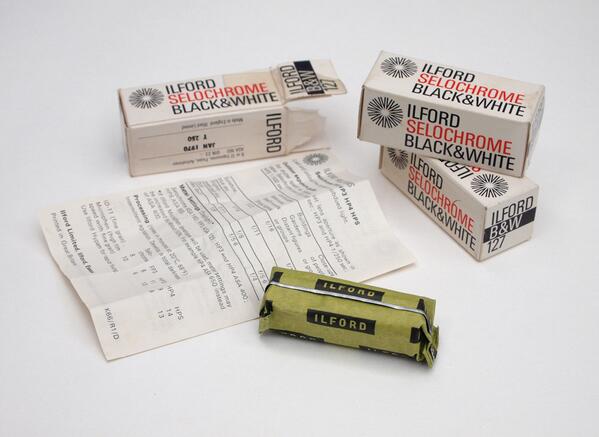 |
| Ilford Selochrome 127 format |
I developed the first of the Selochrome films only to find that I didn't have any fixer. This oversight can be explained by the fact that I wasn't using my normal darkroom due to refurbishment, instead developing at home using a dark bag and a single reel tank. I had acquired a number of bottles of various chemicals and was under the impression one of these was fixer. Instead, I had three different types of developer, and one bottle of stop. As it was a Sunday afternoon, I wasn't able to buy some fixer there and then. Rather than leave the film in the rinse unfixed overnight, I looked online for suggestions of household chemicals that could be substituted for fixer, and came across several discussions (mainly with the same participants, such as
here and
here) about the use of common salt. From others' experiments, the use of a salt solution requires the film to be soaked for considerable time in a highly saturated solution. Apparently, the time can be reduced by being heated, but I didn't want to so with such an old film, fearing that the emulsion might simply separate from the base, quite apart from the chance of reticulation. Recommendations for the salt solution suggested a mix of 300g salt to 1 litre of water, which I heated to disolve the salt, cooled the solution, and then left the film soaking overnight. I also soaked an undeveloped film end to use as a control. The next morning, after around 18 hours, the film end was nearly clear, but not so transparent that I would be confident of its archival stability. I bought some Ilford Rapid Fixer to fix the Selochrome film, which was also fairly clear after being soaked overnight. Although I did take the precaution of re-fixing the film, this experiment seemed to demonstrate that it would be possible to use such a technique in an emergency, but not in a hurry.
 |
| Brick Wall & Shadows, Baby Ikonta, Ilford Selochrome |
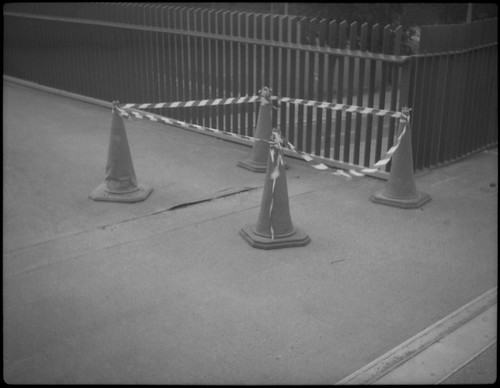 |
| Cones, Baby Ikonta, Ilford Selochrome |
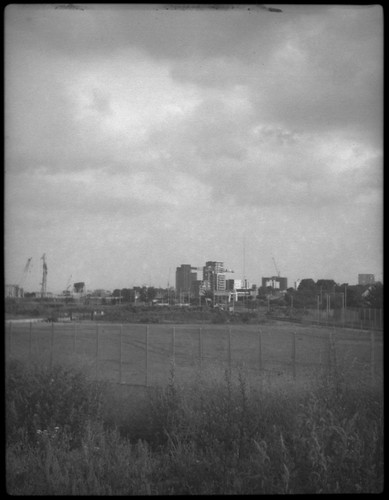 |
| 127 Day, Baby Ikonta, Ilford Selochrome |
The Selochrome negatives looked a little overexposed, with some fog as to be expected with films over forty years old, and there was a texture imparted on the emulsion from the backing paper, but this mainly showed up in larger areas of more even tone, such as the sky in the last photograph above.
I also shot two rolls of Kodak High Resolution Aerial Duplicating film cut to 127 size. One film I pre-exposed in the darkroom to raise shadow values, the other was shot without, although the results show no real difference. Having recently tried
stand development with Ilfotec LC29, rather than Rodinal/R09 One Shot, I also used it here. The first of these High Resolution Aerial Duplicating films was stand developed in Ilfotec LC29 at a dilution of 1+200, but, looking a little thin, I used a dilution of 1+150 for the second film. I was also using a small tank, which only held a maximum of 400ml, so the actual amounts of developer used was very small, 2ml and 3ml respectively. The best shot from the High Resolution Aerial Duplicating film is at the top of this post, all the other photographs had featureless skies, which I did expect from this high contrast blue-sensitive film, which also exaggerates the vignetting of my Ikonta's Novar lens, even stopped down.
 |
| Lea Interchange, Baby Ikonta, High Resolution Aerial Duplicating film |
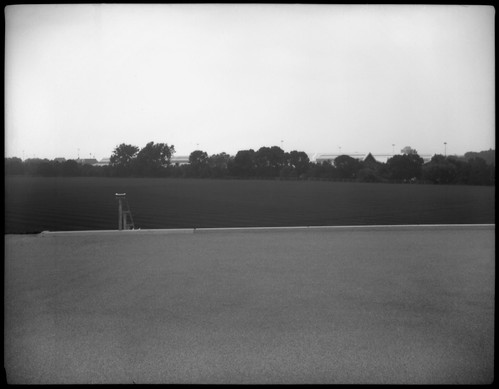 |
| East Marsh, Baby Ikonta, High Resolution Aerial Duplicating film |
 |
| Leyton Sign, Baby Ikonta, High Resolution Aerial Duplicating film |








No comments:
Post a Comment